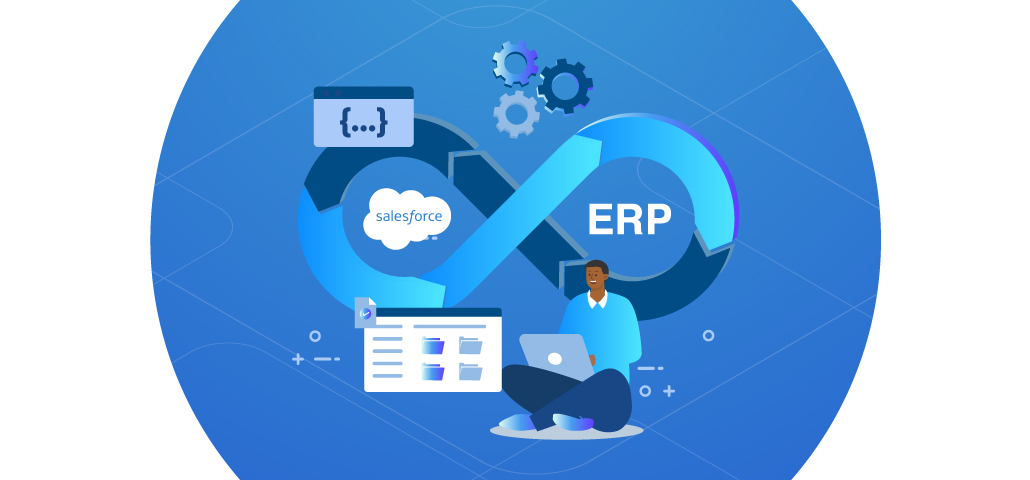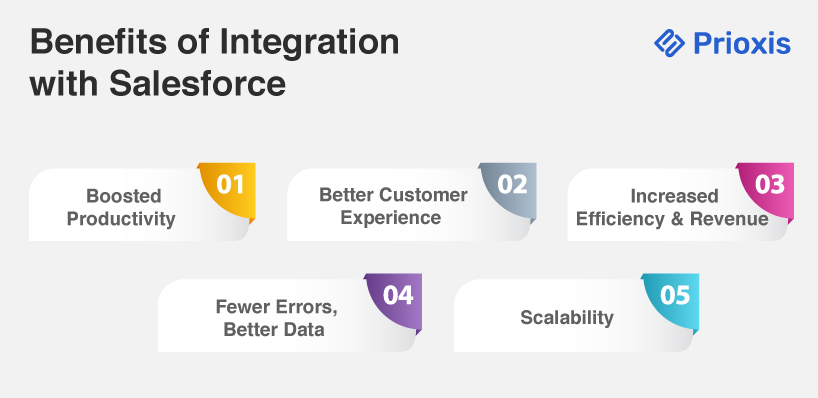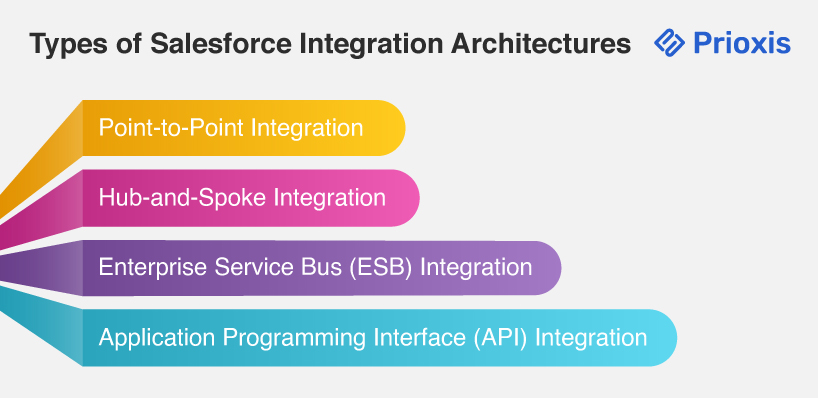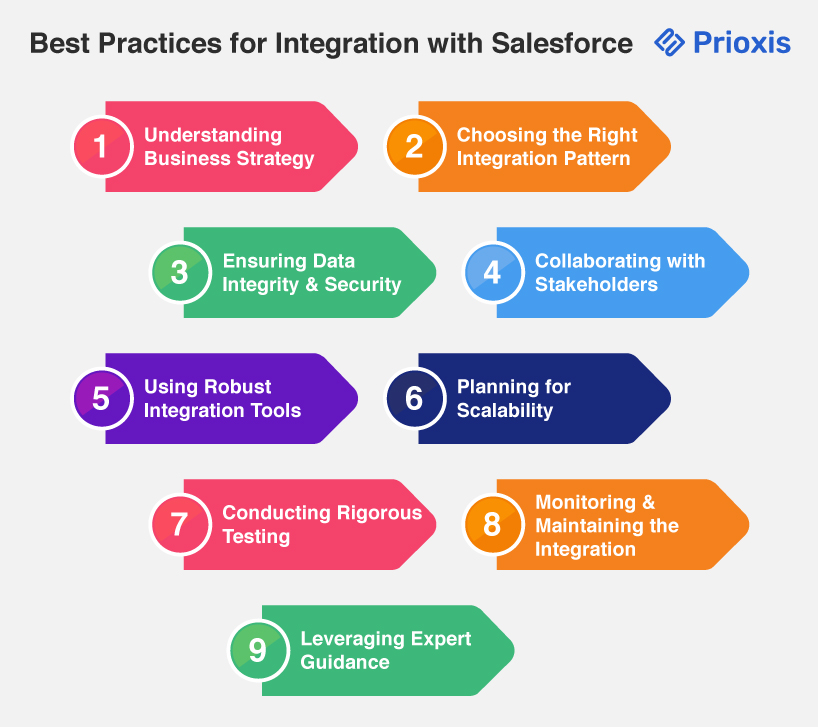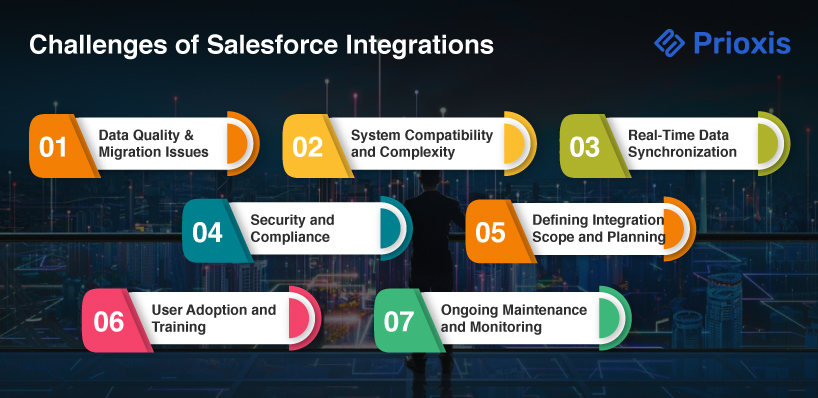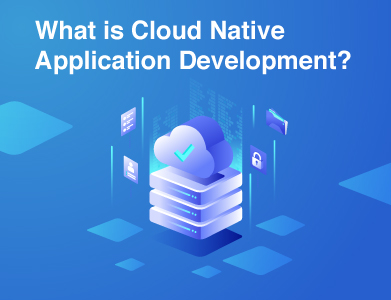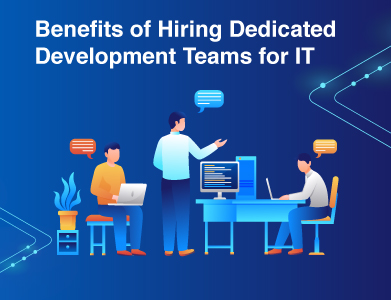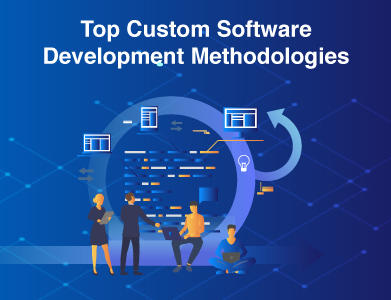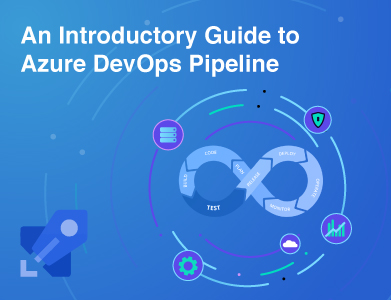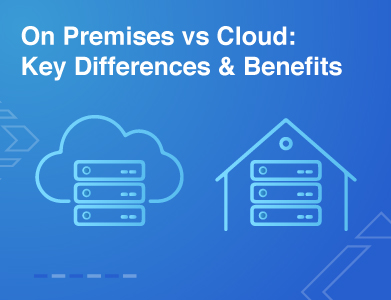Expertise
Managing sales and marketing systems separately can feel like a mess. Information gets lost. Processes slow down. Teams struggle to stay organized. It's frustrating for you and even worse for your customers. So, how do you fix it? The answer is simple: connect everything in one place. And that’s what Salesforce Integrations does.
Take Global Associates as an example. They’re a successful sales and marketing company. They work with clients in 15 different countries. But they were dealing with the same issues you might face. Their CRM was outdated. Manual tasks slowed them down. Moving data between systems took too much time. So, they switched to Salesforce.
What happened next? Their sales reps saved hours each week. Productivity jumped by 30%. Lead generation became 20% more effective. All because they connected their tools and automated their workflows. If you’re feeling the same pain, Integration with Salesforce might be your answer, too.
In this post, we’ll explain Salesforce Integrations and how to integrate it to make the most out of it.
What Is Salesforce Integrations?
In simple terms, Salesforce Integrations connects Salesforce to your other systems. It could be your marketing tools, customer service platforms, or inventory systems. With integration, these tools start working together smoothly. Without it, each tool operates in its own world. That makes things harder for your team.
Let’s imagine you run a mid-sized company. Your sales team uses Salesforce to track leads. Marketing uses a different tool for campaigns. Customer service is on another platform. Without integration, these teams can’t share information easily. However, with Salesforce Integrations, everything is connected.
Now, your sales team knows what marketing emails a customer opens. The service team knows what products a customer buys. No one has to move data around manually. It’s all automatic. Integration gives you a complete view of each customer. That means better, faster service.
Benefits of Integration with Salesforce
1. Boosted Productivity
When systems are connected, your team can spend less time on manual tasks and more time focusing on important work. For example, a global manufacturing company integrated their sales, marketing, and customer service systems with Salesforce. The result?
Their sales reps reported saving an average of two hours per day. Instead of wasting time transferring data, they could focus on closing deals and building relationships.
2. Better Customer Experience
An integrated system allows teams to deliver a smoother, more personalized experience. When Salesforce connects with your customer service platform, support agents instantly see a customer’s history, whether previous purchases or support requests. This leads to faster problem-solving and a personal touch that customers appreciate.
3. Increased Efficiency and Revenue
Integration with Salesforce leads to more efficient workflows and can boost revenue. For example, companies using Salesforce Marketing Cloud reported a 60% increase in site conversion rates and a 35% boost in average order values by the third year of integration.
4. Fewer Errors, Better Data
Manual data entry is slow and prone to errors. By automating data flow between systems, integration reduces mistakes and ensures accurate information. For example, customer orders entered in one system can automatically update across all connected platforms, ensuring everything is noticed and correctly entered.
5. Scalability
As your business grows, Salesforce Integrations scales with you. Whether expanding into new regions or launching new products, integration keeps your operations running smoothly, no matter how large your business becomes.
Salesforce Integrations ROI
What’s the real payoff? The numbers speak for themselves.
More Revenue Real-time data helps teams deliver better results. Integrating Salesforce Marketing Cloud increased average order value by 35%. Businesses also saw over $5 million in additional revenue across channels.
Improved Efficiency Integrated systems mean less time switching between platforms. In one example, sales reps saved two hours a day. That time was spent on meaningful tasks, like building relationships and closing deals.
Cost Savings Automation cuts costs. Companies using Salesforce Marketing Cloud saved 60% of time on marketing campaigns. Reporting efforts dropped by 90%, directly lowering operational costs.
Learn Further: Overview of Salesforce Development
Types of Integration Patterns in Salesforce
When integrating Salesforce, the key question is: What type of integration works for you? Each business is different. Your needs depend on how your systems work and the data you connect. Typically, companies focus on three types of integration: data, business logic, and user interface.
1. Data Integration
This keeps data in sync between systems. Think of it as a shared pool of information. It’s always up-to-date, no matter where it’s accessed. Imagine Salesforce running alongside your ERP system. When you make a sale, it automatically updates stock levels. Data integration ensures all systems have the same information. This is vital for accuracy and speed.
2. Business Logic Integration
This lets different systems work together to complete tasks. It’s great for complex operations. For example, your sales app can trigger your billing system to create an invoice. Your backend systems do the heavy lifting. It automates workflows so your team doesn’t have to.
3. User Interface Integration
This creates a unified experience across applications. It allows users to access different systems through one interface. Imagine customer service agents using Salesforce but needing to log into another system too. UI integration brings everything together. This makes workflows smoother and keeps things simple for users.
Types of Salesforce Integrations Architectures
Now that you know the types of integration, let’s talk about how to implement them. Salesforce Integrations typically fall into three main architecture models. Each offers different levels of complexity, scalability, and cost.
1. Point-to-Point Integration
This is the simplest type of integration. Two systems connect directly to exchange data. Think of it as building a single bridge between two applications. For example, your sales system might send order details to a billing app.
However, this setup isn’t very scalable. Adding more systems means creating separate connections for each one. As you grow, managing these connections becomes complicated and costly. If one system changes, you may need to rebuild many connections.
Best for Small businesses with only a few touchpoints.
Drawback Not easily scalable. More systems mean more complexity and higher costs.
2. Hub-and-Spoke Integration
In this model, a centralized hub handles communication between all systems. Each system connects to the hub, which directs the data to where it needs to go. This simplifies managing multiple integrations.
Imagine your sales, billing, and inventory systems plugging into one hub. The hub manages the data flow, so you don’t need to connect each system individually. As you grow, you just plug new systems into the hub.
Best for Businesses needing a scalable solution for multiple systems.
Advantage One connection per system; the hub handles the rest.
3. Enterprise Service Bus (ESB) Integration
This is a more advanced version of hub-and-spoke integration. It’s designed for larger organizations needing flexibility and control. ESB can route, transform, and orchestrate messages between systems. For instance, if your inventory system uses a different format, ESB translates the data.
ESB also handles processes that need steps in a specific order. For example, verifying payment, updating inventory, and sending a shipping confirmation—ESB ensures each step happens in sequence.
Best for Large organizations needing advanced features like message transformation.
Limitation ESB requires more resources and can be costly to maintain.
3.Application Programming Interface (API) Integration
APIs (Application Programming Interfaces) are essential for salesforce integration ERP system. They allow systems to send and receive data between Salesforce and third-party services. APIs are flexible, scalable, and efficient. This makes them a popular choice for integrating Salesforce into nearly any application—whether it’s for internal processes or customer-facing tools.
For example, an e-commerce company can use an API to sync customer data between its website and Salesforce. This ensures seamless updates, so customer information remains accurate in both places. Salesforce APIs are also great for adding new features without starting from scratch. They provide reusable connections, which makes development faster and more efficient.
Best for Businesses looking for cost-effective, scalable, and flexible integration.
Advantage APIs allow for rapid development and easy functionality updates and are reusable across various systems.
Learn More: Salesforce Marketing Cloud vs Pardot
Choosing the Right Integration Approach
The best integration type depends on your business needs. If you only need to connect a few systems, point-to-point integration may be enough. However, if you’re a larger organization with more complex workflows, hub-and-spoke or ESB will offer better scalability.
Consider your long-term goals. Do you need a solution that grows with your business? Is seamless data syncing between systems critical for your operations? By answering these questions, you can pick the integration architecture that best fits your business.
Salesforce Integrations Capabilities
APIs might seem dry, but they’re crucial for smooth salesforce integration ERP system. They help different systems talk to each other. When you get API integration right, it saves time, money, and frustration.
Think of APIs as connectors. They let apps and systems exchange data easily. The best APIs are flexible, efficient, and minimize hassle. When integrating Salesforce, two key factors matter: timing and direction.
Timing
- Synchronous This works like a conversation. You send a request and wait for a reply. For example, Salesforce requests data from another system and pauses until the response arrives. If you're checking real-time inventory, you need to wait for the data before moving on.
- Asynchronous This is like leaving a voicemail. You send a request, but don’t wait for a response. It’s ideal for longer tasks, like processing large amounts of data in the background.
Direction
- Outbound Salesforce starts the conversation. It sends a message to another system, like sending order details to your billing app.
- Inbound Another system initiates the request, asking Salesforce for information or sending data into Salesforce.
Now, let’s explore the different tools Salesforce provides to build these integrations:
1. REST API
The REST API is lightweight and perfect for web or mobile apps. It’s ideal for handling data operations like creating, reading, or updating records. REST works in real-time, so you send a request and get an instant response. For example, you’d use REST to add a new Salesforce contact from a mobile app.
Best for Web and mobile apps.
2. SOAP API
The SOAP API is older and more formal. It’s great for system-to-system communication, especially with legacy systems. SOAP is asynchronous, meaning it doesn’t wait for responses before moving on. While it uses more bandwidth, it’s reliable for back-end integrations.
Best for Legacy systems and complex environments.
3. Bulk API
Need to move large amounts of data? The Bulk API handles high-volume tasks, like moving millions of records. Bulk API does the job without slowing things down if you're migrating customer data from one system to Salesforce.
Best for Large data migrations or high-volume processing.
4. Streaming API
The Streaming API sends real-time notifications. It’s event-driven, so it triggers alerts when specific actions happen. For example, an e-commerce business can use it to update Salesforce whenever a customer purchases.
Best for Real-time notifications and event-driven processes.
5. Outbound Message
Outbound messages are a simple way to send data without writing code. When an event occurs, like closing a deal, Salesforce sends a message to another system to trigger actions like generating an invoice.
Best for Quick, no-code integration.
6. Web Service Callouts
Web service callouts occur when Salesforce initiates a request to an external service. For example, updating an address in Salesforce can trigger a callout to verify it with a third-party service. Callouts provide real-time data without manual intervention.
Best for Real-time requests from Salesforce to external systems.
7. Salesforce Connect
Salesforce Connect allows you to view external data in Salesforce without storing it there. This is useful when you want real-time data access from external systems, like a billing system, without duplicating data in Salesforce.
Best for Accessing real-time external data without storing it in Salesforce.
8. Heroku Connect
Heroku Connect syncs data between Salesforce and a Heroku Postgres database. It’s perfect for large-scale apps. If running a high-volume mobile app, Heroku Connect lets you store data outside Salesforce while keeping everything synced.
Best for High-volume apps needing Salesforce data sync without high storage costs.
Step-by-Step Process to Salesforce Integrations
Integrating Salesforce with your other systems may seem complex, but it's one of the best moves to streamline your business. A clear, step-by-step approach makes it manageable. Here's how to do it smoothly:
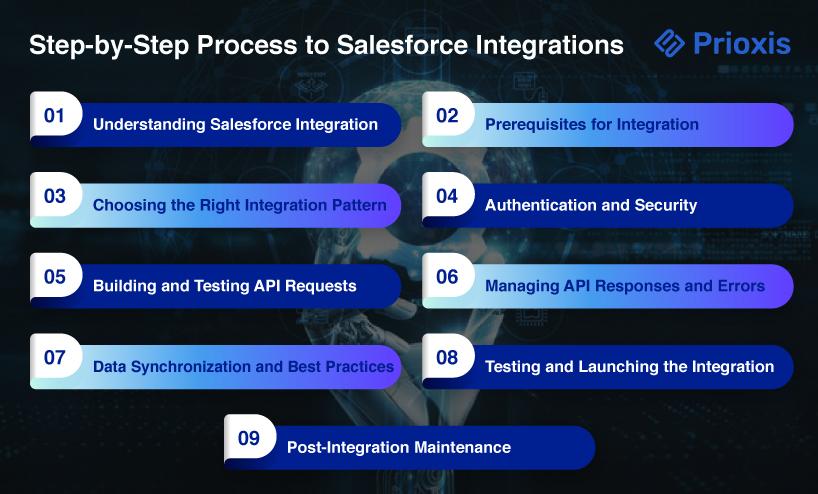
1. Understanding Integration with Salesforce
Salesforce Integrations means connecting Salesforce to your other tools. This allows seamless data flow between them. Whether syncing customer info from your e-commerce platform or pulling sales data from your ERP, integration keeps everything in sync. This increases productivity, fewer errors, and a better customer experience.
2. Prerequisites for Integration
Before you start, make sure you have:
- A Salesforce account.
- Basic knowledge of APIs (or an integration tool to simplify this).
- API credentials (Consumer Key and Secret) to authenticate your integration. Having these ready makes the process smoother.
3. Choosing the Right Integration Pattern
Salesforce offers various integration patterns. Your choice depends on your business needs. Some examples are:
- Request and Reply The system requests and waits for a response before continuing.
- Fire and Forget Data is sent, but no reply is needed
- Batch Data Synchronization Data syncs in scheduled batches.
- Data Virtualization External data is used in Salesforce without being stored.
Your choice depends on the type of data exchange your business needs.
4. Authentication and Security
Security is critical. Ensure everything is locked down with strong authentication methods. Salesforce provides tools to integrate external identity services. Also, always use HTTPS to protect data while it's being transferred.
5. Building and Testing API Requests
Once authentication is set, it’s time to build and test API requests. Start by making a simple call to retrieve data from Salesforce. Thorough testing will help you catch any issues early on. For instance, if you pull customer data from your website into Salesforce, check that all fields are accurate.
6. Managing API Responses and Errors
Things can still go wrong, so be prepared. Set up error-handling processes to address issues quickly. Make sure your system can handle common errors like timeouts or invalid data. Have a backup plan in place to retry failed requests if necessary.
7. Data Synchronization and Best Practices
Keep your data consistent across platforms with these best practices:
- Data Integrity Ensure that data flowing between systems is accurate.
- Data Quality Avoid duplicate or incorrect data.
- Scalability Plan for future growth to avoid bottlenecks.
Regular audits and cleanups will keep your integration running smoothly.
8. Testing and Launching the Integration
Test everything thoroughly. Run through different scenarios to catch potential issues. Once testing is complete, you can confidently launch. After going live, be ready for post-launch support to fix any unexpected bugs.
9. Post-Integration Maintenance
Integration isn’t a “set it and forget it” task. Ongoing maintenance is key. Regularly track performance, troubleshoot issues, and optimize the integration as needed. Make adjustments to keep up with Salesforce and system updates.
Best Practices for Integration with Salesforce
1. Understand Your Business Strategy
Before starting, define your business goals. How does this integration fit into your broader strategy? Conduct stakeholder interviews, perform a gap analysis, and determine the project's scope.
2. Choose the Right Integration Pattern
Choose the right pattern based on your needs. Consider:
- Data Integration: Ensures smooth data flow between Salesforce and external systems.
- Process Integration: Manages interactions between Salesforce and other systems.
- Virtual Integration: Access real-time external data without duplicating it.
3. Ensure Data Integrity and Security
Protecting data is vital. Enforce a data governance strategy to ensure clean data flows between systems. Security must be front and center. Ensure third-party apps meet security standards and follow regulations like GDPR.
4. Collaborate with Stakeholders
Involve all relevant departments early in the process. Clear communication on goals and timelines ensures alignment. Work with stakeholders to map out business scenarios and processes.
5. Use Robust Integration Tools
Choose the right tools, whether API-based, middleware platforms or native connectors. The tools should support real-time synchronization and efficient data flow. Tools like MuleSoft and Salesforce Connect simplify this.
6. Plan for Scalability
As your business grows, your data needs will increase. Choose tools and design your integration to handle future growth. This avoids performance issues down the road.
7. Conduct Rigorous Testing
Testing is crucial. Start with a sandbox environment. Run User Acceptance Testing (UAT) and adjust before going live. This ensures the integration meets user expectations.
8. Track and Maintain the Integration
Once live, track the integration regularly. Perform audits, check data integrity, and update the integration as systems evolve.
9. Leverage Expert Guidance
Complex integrations can benefit from expert support. An experienced partner can provide best practices, optimize performance, and help you avoid common pitfalls.
Challenges of Salesforce Integrations and How to Avoid Them
Integrating Salesforce with other systems can improve your business operations. But it comes with challenges that, if not handled properly, can become major headaches.
1. Data Quality and Migration Issues
Migrating data from old systems into Salesforce can take time and effort. Inaccurate or duplicate data can lead to errors and poor decision-making. If the data is messy, your reports won’t be reliable. Data migration is a complex process that can cause delays or higher costs if not managed well in salesforce integration ERP system.
How to avoid it Clean your data before migrating. Deduplicate and ensure accuracy. Plan your migration process carefully to avoid errors.
2. System Compatibility and Complexity
Salesforce might not seamlessly connect with older or custom-built systems. These systems may use different formats or versions, making integration complicated. This complexity can slow down the process and introduce technical challenges.
How to avoid it Map out compatibility requirements early. Work with integration tools or experts who can bridge the gap between systems.
3. Real-Time Data Synchronization
Keeping data updated in real-time across multiple systems is crucial. If your data isn’t synchronized properly, it can cause delays or inaccuracies. This can be a serious problem for businesses that rely on real-time information.
How to avoid it Use real-time integration solutions like Streaming API or Salesforce Connect. Regularly check data flows to ensure synchronization.
4. Security and Compliance
Transferring sensitive data between systems poses security risks. Strong authentication, encryption, and access controls must be in place to prevent breaches. At the same time, compliance with data protection regulations like GDPR or HIPAA is essential.
How to avoid it Use encryption and secure authentication methods. Make sure all systems follow industry regulations. Keep your security protocols updated.
5. Defining Integration Scope and Planning
Without clear goals, your integration project can become overwhelming. Undefined objectives or poor planning can lead to budget overruns, delays, and unsatisfactory results.
How to avoid it Define your goals before starting. Set a detailed plan with a clear scope, timeline, and budget. Involve stakeholders early in the process.
6. User Adoption and Training
Getting your team to use the new system effectively can be challenging even after successful integration. Without proper training, employees may resist using the new tools or fail to understand how to use them.
How to avoid it Provide thorough training and ongoing support. Explain the new system's benefits to encourage user adoption.
7. Ongoing Maintenance and Monitoring
Integration isn’t a one-time task. Systems evolve; without regular monitoring and maintenance, your integration may become outdated or stop working efficiently.
How to avoid it Set up regular performance audits and maintenance checks. Keep systems updated and aligned with your evolving business needs.
Ending Notes: Integration with Salesforce
Salesforce Integrations comes with challenges, from data migration issues to ongoing maintenance. But these challenges are manageable with the right approach and tools.
At Prioxis, we specialize in Integration with Salesforce. With a 99% success rate, our team handles everything from data migration to real-time synchronization and security. We help you plan, execute, and maintain your integration so you can focus on running your business. Turn your Salesforce Integration challenges into opportunities.
